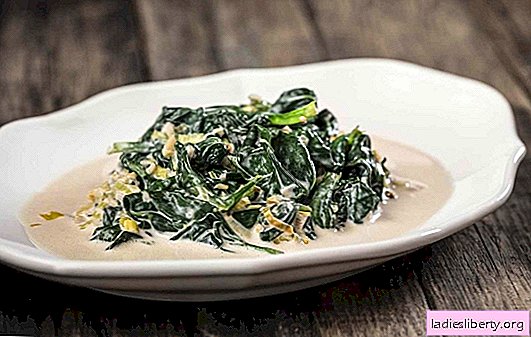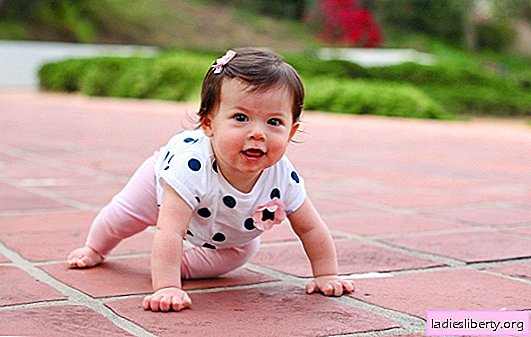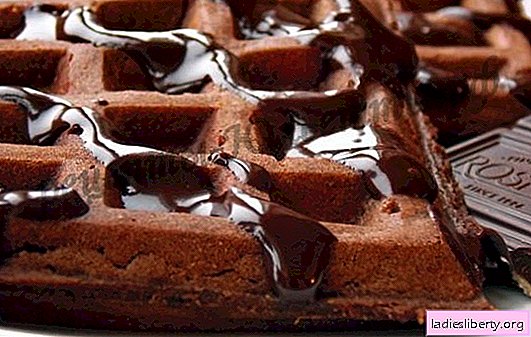
During childbirth, women often experience tearing of the uterus or vagina.
This requires suturing.
In order to avoid problems with these scars, you need to know how much time the stitches dissolve after childbirth and how to remove them.
Let's consider this question in more detail.
How long do different types of sutures heal after childbirth
According to the localization (place of application), the seams are:
1. On the cervix. They are adjusted if the cervix is damaged by a too large fetus.
2. Stitches in the vagina. They are applied during birth injury or rupture of the vagina of different depths. As anesthesia, novocaine or lidocaine is used.
3. Sutures on the perineum can be applied when it is damaged during childbirth, as well as during special dissection by a doctor. There are three types of perineal injuries:
• 1 type (damage to the skin only);
• type 2 (damage to the skin and muscles);
• Type 3 (severe damage to the muscles, their rupture, which reaches the walls of the rectum).
Depending on the degree and type of perineal damage, doctors can use different types of threads (nylon, silk or absorbable).
The following varieties of warp threads are available:
1. Catgut is a completely absorbable material, the threads of which are separated on the seventh day. Such a seam disappears during the first month.
2. Vicryl. It is usually used for caesarean section. It resolves in 60-70 days.
3. Maxson. It completely resolves approximately 190 days after application.
How long do external sutures heal after childbirth?
At the place of application, they distinguish:
• external seams;
• internal seams.
External seams are usually applied to the perineum. They are quite problematic, because they can provoke various kinds of complications in the form of suppuration, inflammation, infection, etc. To prevent this, a young mother should know how to properly care for the seams. Doctors should inform her about this upon discharge from the hospital.
The period of healing of the sutures on the perineum takes a longer time than the internal sutures on the uterus and vagina. In order for them to heal faster, it is recommended to observe bed rest, sexual rest (at least in the first two weeks), and also treat wounds with special antiseptics.
Postpartum discharge from the uterus, which are the foci for the development of infection, complicates the healing process of this type of sutures. To exclude the possibility of harmful bacteria entering the wound, the following rules should be followed:
1. Change the sanitary pad every two hours.
2. To process sutures in the first days after application by antiseptics (it is desirable that the gynecologist did this in the first days).
3. Using a blotting motion, wipe the perineum with a sterile cloth. You can not use fabric towels for this purpose, otherwise microbes can get into the wound.
4. Do not sit down after childbirth for ten days, so as not to provoke a divergence of stitches.
5. Within ten days after the birth, you should refrain from taking flour products and cereals in order to simplify the onset of stool and not cause constipation.
If the stitches in the perineum were made of non-absorbable material, then they are usually removed on the tenth day after delivery.
If the patient has been absorbed with absorbable materials, then they do not need to be removed and after a while they will resolve themselves, but sometimes they also have to be removed mechanically (in case of complications).
How long does the suture heal after childbirth by cesarean section?
Caesarean section is a rather complicated abdominal operation, in which several layers of soft tissues are dissected. For their subsequent connection, durable threads are used (vicryl, dexon, monocryl, etc.).
Today, a cesarean section is very common through a transverse section of the uterus, the length of which is from 11 to 13 cm. This cavity provides all the possibilities to minimize blood loss and rapid healing of the wound.
When using self-absorbable sutures, the healing time of the suture will be from three weeks to one month, although sometimes this process lasts longer.
Sutures using synthetic materials are somewhat more problematic to heal: on the seventh day after application they are removed, but it takes three to four weeks to completely heal the wound.
In addition, the healing period will largely depend on the care of the suture, lifestyle and compliance with the woman all medical recommendations.
How to care for seams
How much time the seams after childbirth dissolves depends on the correct care of the sutures. There are the following rules that doctors advise their patients to follow after suturing:
1. Wear loose underwear so that it does not crush the crotch anywhere. It is also desirable that it be made from natural materials (cotton).
Wearing underwear is strictly forbidden, as it disrupts blood circulation in the pelvis. This, in turn, can trigger the appearance of edema.
2. Lubricate the external scars with antibacterial ointments and solutions.
3. It is advisable to gradually sit down and not make sudden movements.
4. Until the seams are removed, any physical activity (weight lifting, sports, etc.) should be completely eliminated.
5. It should be regularly emptied, otherwise, with a delay in defecation in the muscles of the peritoneum, an additional load will be created that will only intensify pain. To mitigate the bowel movement, it is allowed to use rectal suppositories (before using them, it is recommended to consult a doctor).
6. Every day you need to drink a spoonful of vegetable oil. This will normalize stool and will be a preventative measure for constipation.
7. In the first week after suturing, do not bend.
8. In order not to provoke inflammation of the scars, a hot bath should not be taken before the seams are removed. It is best to wash in the shower.
9. Do not apply hot or cold compresses to the scars, as this can cause inflammation. It is also not recommended to self-medicate. All your actions need to be coordinated with your doctor.
How long do sutures resolve after childbirth: possible complications
Quite often, after discharge (after 1-2 weeks), a woman begins to feel pain and discomfort in the seam area. It is very important to respond to such a symptom on time, otherwise the condition may worsen even more.
Postpartum wounds can cause such complications:
1. Pain. This symptom manifests itself after each operation, and childbirth is no exception. As a medical treatment to relieve pain, you can use special ointments (Kontraktubeks) and dry warming. Stronger medications can only be taken when the woman is not breastfeeding. Otherwise, most analgesics cannot be prescribed to her, as they can negatively affect the condition of the baby.
2. Seams can occur with sudden movement or playing sports. In this case, it is recommended to urgently call a doctor, as blood will ooze from the wound. In addition, this condition is dangerous because an infection can enter the open muscle tissue, which can lead to inflammation, fever and fever.
3. Itching. Usually this symptom does not indicate the presence of pathologies or infections in the wound. More likely, on the contrary, it signals a favorable healing process, therefore, it should not cause anxiety in women.
To slightly reduce the severity of itching, it should be washed with warm water. It is not recommended to use any medicine for itching.
4. Festering wounds is one of the most dangerous complications. Symptoms of it are:
• increase in body temperature;
• malaise;
• weakness;
• the appearance of an unpleasant odor from the seam;
• the appearance of purulent discharge from the wound from dull yellow to dark brown;
• fever;
• pain throughout the seam area.
If the wound is suppressed, a woman is recommended to consult a doctor as soon as possible. After the examination, the doctor will prescribe the necessary ointments and antibiotics. The most effective drugs for eliminating inflammation are such ointments: Malavit, Levomekol, Vishnevsky.
If the scars continue to fester, then a woman may be prescribed the use of chlorhexidine and hydrogen peroxide for daily washing of the suture.
It is important to know that severe suppuration of the wound is dangerous not only for the health of the mother, but also for the baby, especially if a woman is breast-feeding a baby.
5. Discovery of internal bleeding may occur in violation of the rules for wearing loose linen and sitting during the first weeks after surgery. This condition is extremely dangerous, therefore, it requires immediate medical attention.
Immediately before discharge, the attending physician should tell you the approximate date for removing the stitches. If a woman stays in a hospital for a long enough time, then they can remove her stitches right there. If she is discharged home, then she will need to come to the doctor again after a while.
When removing the stitches, the patient does not have to go to the hospital again, since this procedure takes no longer than forty minutes and with good scarring, the doctor will let the patient go home the same day.
It is important to know that even with a satisfactory condition of the wound after removing the sutures, a woman is advised to be careful and avoid lifting weights. She can return to her usual way of life no earlier than six months after the initial stitching.











